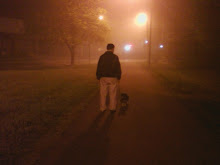Sermon preached January 4, 2009 (I will not be preaching on January 11, so the next post will be after my January 18 sermon)
Scripture Readings: Isaiah 60:1-6; Matthew 2:1-12
On Sunday evening December 28, a small group of us gathered for the monthly Faith and Film night to watch It’s a Wonderful Life. It came at the end of a chaotic series of days for me, and truth be told there was a part of me that would not have been crushed had no one shown up. That’s not about them, it is about how I was feeling. Christmas had been busy, which it always is, but the business and chaos was compounded by my father’s dying process and my fender-bender. I had spent part of the afternoon on Sunday at St. Mary’s hospital where my dad had returned briefly – he is in a nursing home. Anyway, people came and we screened the film and had a wonderful time.
It’s a Wonderful Life is enjoyable, and it has the capacity to teach. We miss some of that because of the neat ending to the story, but when we are willing to penetrate the movie a bit more deeply, there are all kinds of life lessons there. I am not alone in thinking this. In the December 26 issue of The Week, the magazine published an article on It’s a Wonderful Life telling the story of the movie from its release in 1946, to its failure at the box office, to its comeback in the 1970s, to its enormous popularity today. The film still works, the article says, because “it plays on people’s great ambivalence about Christmas. For many, the holiday is a time of both great joy and mournful introspection. By deftly poising those two themes on an emotional knife-edge [the movie] touched America’s collective heart.” Stephen Spielberg: “It’s a Wonderful Life shows that every human being on this Earth matters and that’s a very powerful message.”
Days later, the January 5, 2009 issue of The New Yorker contained a commentary by Adam Gopnik about the economy, and he drew lessons from It’s a Wonderful Life. Gopnik argued that the economy cannot be understood simply by thinking in terms of “rational economic” behavior, but needs to consider “social-emotional” behavior. Mr. Potter may have been greedy and power hungry, but in terms of economic models, he is the rational actor – not willing to risk loans to people he considers too unworthy. George Bailey, in the article is a “Capraesque Keynesian.” That’s a lot to take from a simple 1946 movie.
Yet the movie is deeper than we may imagine. Behind the feel-good ending we get glimpses of a man whose dreams have been stymied by the death of his father, by his desire to help his younger brother, by circumstances of his own choosing. In the movie there are moments of genuine anguish and despair, and a central scene in the movie involves suicidal despair. From that perspective this hardly seems like a light holiday film. There is also greed, money and power in the film. There really is a lot there to chew on.
A lighter scene which remains significant for the whole film is one in which Mary, played by Donna Reed, and George, played by Jimmy Stewart, are walking home after Mary’s high school graduation dance. You want the moon, Mary? Just say the word and I’ll put a lasso around it and pull it down for you. I’ll take it. Then what? Then you could swallow it. And it’ll all dissolve, see and the moonbeams would shoot out your fingers, and your toes and the ends of your hair. Of course, George cannot pull down the moon, though that image returns again and again is a picture Mary creates for him. By movie’s end, we know Mary has a light inside of her that shines. In the end, George discovers that he has a light too, a light that has touched countless lives and a light that needs to stay lit.
Our Scripture texts for today remind me of this particular scene from It’s a Wonderful Life. In the traditional story of the coming of the magi, the wise men from the east, there is a star that guides them to the place where they will find Jesus. Of course, the star is only intended to point to the more significant light coming into the world. Augustine reminds us “Christ was not born because the star shone forth, but the star shone forth because Christ was born” (Feasting On the Word). With Christ, something will change in history, something outside the usual structures of power. Herod remains clueless. Something is happening in this Christ child that will draw people even from distant places. A new inclusivity is being inaugurated.
Because light has come into the world in Jesus the Christ, as Christians we hear the words of Isaiah in a new way – “Arise, shine your light has come, and the glory of the Lord has risen upon you.” The light arrives, even when darkness seems to cover the earth, even thick darkness – the darkness of a world at war, the darkness of despair over dreams lost, the darkness of economic uncertainty, the darkness of planetary peril. The light arrives and our response is to shine. We take in the Christ, and want the beams of his light, grace, love, compassion to shine through our fingers and toes and the ends of our hair (or our scalps as may be appropriate).
I think there are two parts to letting our lights shine. We need to care for the light within, to polish our lamps in a manner of speaking. Our bishop calls this “spiritual vitality.” Have you ever reached for a flashlight when the power has gone out, only to discover that the batteries you put into it months before have gone dead? When batteries just sit, they still lose power. So in our lives, when we don’t care for the light within, it dims. Traditionally, Christians call the things we do to care for the light inside spiritual disciplines or spiritual practices. Traditionally they have included things like prayer in all its wonderful variety, Scripture reading, shared worship including communion. They have also included compassionate action and work for justice and the common good – but more about these shortly. There has been a deep and renewed interest in Christian spiritual practices in recent years, and this is to the good. The lists of activities that can become spiritual practices has expanded. Here is a list from a web site called Spirituality and Practice, a web site I found through a clergy friend:
Attention
Beauty
Being Present
Compassion
Connections
Devotion
Enthusiasm
Faith
Forgiveness
Grace
Gratitude
Hope
Hospitality
Imagination
Joy
Justice
Kindness
Listening
Love
Meaning
Nurturing
Openness
Peace
Play
Questing
Reverence
Shadow
Silence
Teachers
Transformation
Unity
Vision
Wonder
X - The Mystery
Yearning
You
Zeal
Our texts speak about receiving gifts. Keeping our inner light bright is being open to receiving the grace and love and passion of God into our lives, and spiritual practices are doing those things that help that grace, love and passion enter and shape us deeply.
Being a disciple of Jesus Christ is never simply about receiving, about polishing our inner light. It is also always about letting that light shine out into a world. We shine because the world needs to be touched by light. The darkness is deep indeed, and we need to let the light of Christ shine through us to make the world a little less dark. Serendipitously, letting our light shine also keeps that light bright.
Washington Gladden, a powerful preacher at the turn of the last century, in a speech given in 1907 urged his listeners “to see the church as a manifestation of Christ.” Gladden believed that one of the most important reasons for the life of Christ and for the life of the church was “to make men and women feel that the great joy of life… is the joy of service; to populate this world with… people whose central purpose it shall be, not to get as much as they can, but to give as much as they can – this is what Jesus came into this world to do” (Feasting on the Word). Let your light shine.
Archbishop Desmond Tutu of South Africa, a shining light in his own right shares the story of another woman who has let her light shine – Angela Rackstraw (Ode, January/February 2009, p. 58). In the 1980s, the apartheid government of South Africa was cracking down on black communities that were centers of protest, including the small community of Crossroads in Cape Town. Crossroads was divided by factions, one of which was a government paid group whose mission was to destroy anti-government activists. At the time, Angela Rackstraw was a member of Christ Church, Kenilworth, an Anglican parish deeply committed to social justice and the common good. The parish provided food and blankets to activists in Crossroads, often working late at night to foil the government. Angela was a nurse and she rode along on one of the deliveries to see what was happening. What she saw shocked her to the core. Children were playing in the street, jumping over humps in the road. Coming closer, she saw the humps were the dead and dying, victims of the latest shootout. Angela wondered what would happen to children who witnessed such violence, and she knew that it was likely they would become teenagers who would kill or be killed. Angela decided she needed to do something, something beyond nursing. She decided that she might be able to help by becoming an art therapist. To do so, she would need further training – in both psychology and art, even though she was an artist already. She began to study at the University of Cape Town. The University of Hereford in the U.K. offered a degree in art therapy and admitted her, but the cost was more than she could afford. She struggled to come up with the funds for tuition and travel, and managed to do that. She studied for four years in the U.K., working nights in a nursing home to cover her living expenses, and earned her master’s degree in art therapy.
Returning to Cape Town she found no jobs, so she began the Community Art Therapy program. The program has grown and expanded, though finances are always a challenge. Archbishop Tutu writes about her: Her work with children and women may be a drop in the ocean considering the thousands upon thousands who live in our sprawling townships, often in the most appalling conditions, where they become victims of abuse, violence, and exploitation. But for those who come to Angela, she’s a healer who endows them with hope. She gives children a future, and that’s a gift to us all.
Arise, shine, for your light has come. You have a light within, let it shine. Only you have your light – let it shine. Only you can do the good you can do. Let your light shine. Keep your light bright within, but always let it shine. The darkness may be deep in our world, and we sometimes feel the darkness creeping within us, but let your light shine. Amen.
Subscribe to:
Post Comments (Atom)


No comments:
Post a Comment